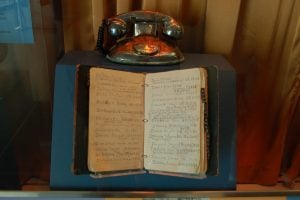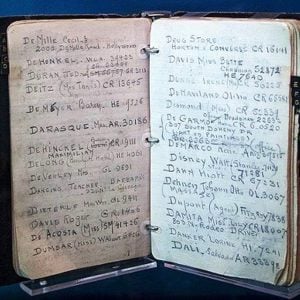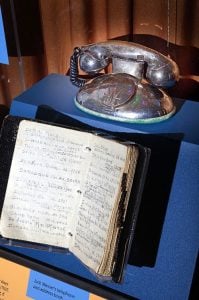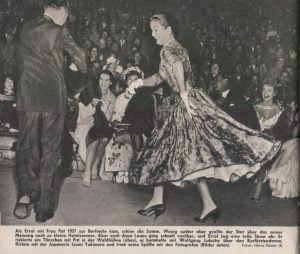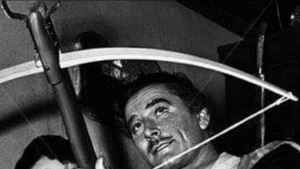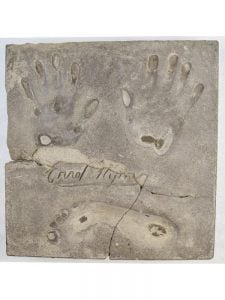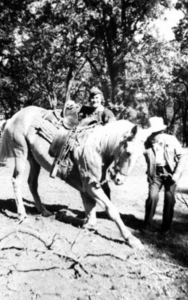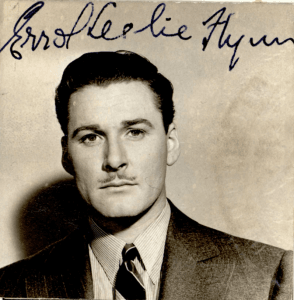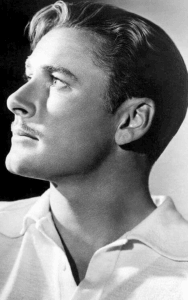
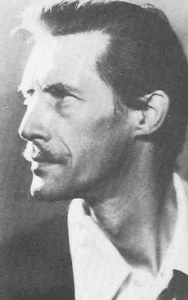
Dear fellow Flynn fans,
we all here agree that there never will be another Errol Flynn. But if there ever was another actor, who could pass for a brother, an evil twin at that, it´d have been John Carradine. They were kindred spirits in many ways, both experiencing heights and letdowns of Olympian proportions and even sharing similar mishaps that come with a hell or highwater attitude.
Born Richmond Reed Carradine in New York on February 5 of 1906, the later day John, set his sight on the stage when seeing “The Merchant of Venice” at age 11. Donning different roles and robes seemed a way out of his drab childhood with a distant mother (one of the first female surgeons) and an abusive stepfather. A harsh education in Catholic schools made him direct his spiritual interest into a different direction. The only mass he would attend thereafter would be a black one.
Starting out as a portrait drawer, he studied sculpturing with no less than Daniel Chester French, the creator of the Abraham Lincoln monument in Washington DC. Inspired by his favorite movie “The Golem” he strived hard to model something out of nothing, to give the breath of life to an inert matter- be it clay or play. Subconsiously this also is the plot of a lot of the horror movies he would star in in the future. In addition to that he tried to make a mark for himself as a set designer in Hollywood. But Jack of all trades wanted more and his dream of reciting Shakespeare became an unbearable urge. Enter John Barrymore.
Carradine seeked out the great profile and thespian sans compare at his Bella Vista villa in 1930. He had been prowling Hollywood Boulevard in cape with cane and Fedora hat already for some time and was seeking advice on how to tackle the famous line of Richard III: “A horse, a horse, my kingdom for a horse..”. Barrymore said “Let`s have a drink!” and let him in. First into his home, then into his circle of carousing comrades. John Carradine became a regular of the Bundy Drive Boys with the likes of John Decker, Gene Fowler, Ben Hecht, W.C. Fields and Errol Flynn. After well received performances at the Pasadena Playhouse, his screen career took off as well, starring in legendary films as Stagecoach, Jesse James and the Grapes of Wrath. He bought a Dusenberg, a yacht “The Bali” and started raising a family with the intent to father a whole baseball lineup of sons. At the same time he deemed acting in movies as beneath him. “I never did like `em. Occasionally I got to play in a good one. But mostly I have been in pictures that never got anywhere and never settled anything; that only caused the patrons to waste an hour and a half of their valuable time. Of course if I don`t succeed in Shakespeare, I`ll come back to make some more pictures. After all I do appreciate all the money ($1750 per week in 1942) Hollywood paid me.” Sounds an awful lot like Ol`Errol to me.
By the true nature of Tinseltown things, the major studio bosses didn´t like being needled, not even by the dagger of a critically acclaimed Hamlet. The hand that fed him became an iron fist and pretty soon Carradine found himself offered only scripts where he either played a Nazi, a mad scientist or other freakish creatures. Yet again he managed to capture their maniacal ways in his own magickal manner. “The devil hath power to assume a pleasing shape.” (Hamlet, act II, sc 2)
After his first marriage with Ardanelle, who had lost her mind, wandering around as a real life Lady Macbeth in her nightgown talking to ghosts, faltered, he married his Shakespearian protegé Sonia Sorel, some fifteen years his junior. Sued for back alimony, John Carradine had to sell house & yacht and put up tent with his young muse in the Garden of Allah bungalow complex of silent siren, Alla Nazimova. Sharing the same initials with Jesus Christ, JC accepted bets there and then, that he could walk over the waters of the Black Sea- shaped pool. This messianic antics are reminiscent of Casy the preacher from Steinbeck`s “Grapes of Wrath” or his technicolor deathbed scene of “Blood and Sand”, where he is merely an extension of the crucifix hanging over his head.
Forever remembered for spooking audiences as Dracula, Blackbeard, Captain Satan, Voodoo Man and in his last hoorah as Judge of hell, John Carradine died in Milan, Italy, after climbing the 328 steps to the top of its Gothic Dome. He had set out to ascend his own personal Jacob`s ladder. Son David remembered the funeral at St. Thomas, the Episcopal Church on Hollywood Boulevard as a macabre outing, where the undertakers had given the cadaver a demonic, artificial grin. “…like nothing I had never seen him do in real life, except in his horror films.” He was poured a final drink, but the boys had trouble getting the champagne in the bawdy bard`s sewn- together mouth wetting his dark suit in the process. Not that it mattered much, for he was given a sea burial near Catalina Island, where he did patrol as a coast guard during WWII with his Bali. Sonia, his estranged wife no. 2, died a bag lady down and out in LA in 2004.
Good night, sweet Prince of Darkness.
Enjoy,
— shangheinz
